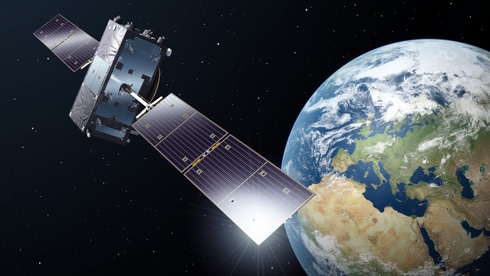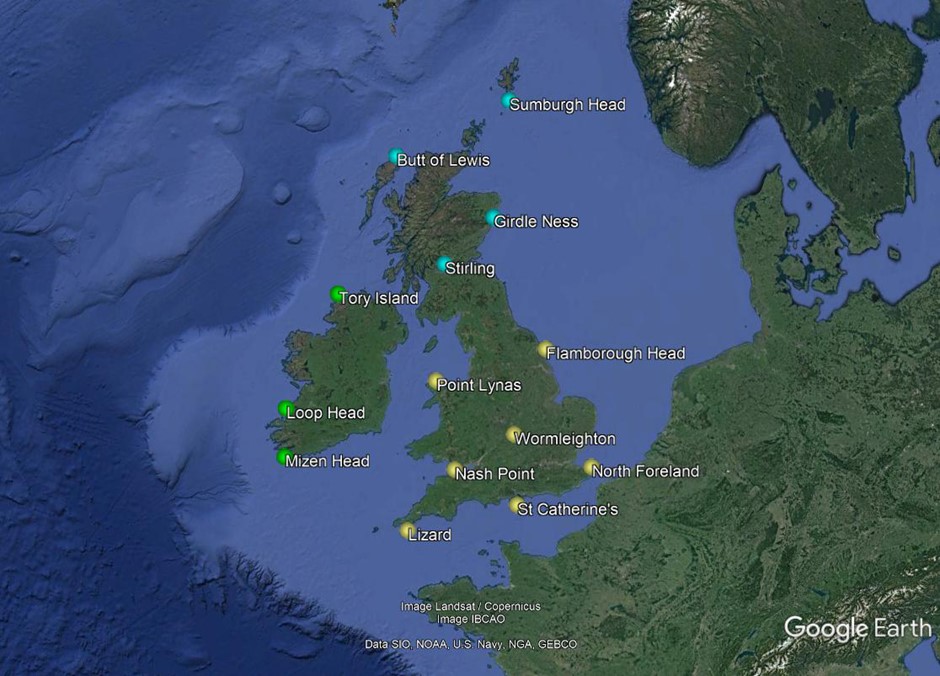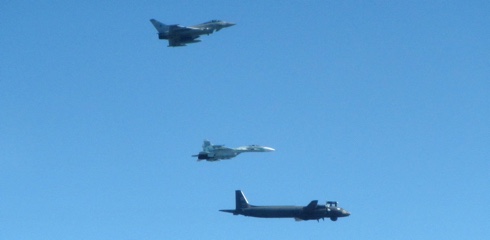Satnav loss might shut down sea

Satellite navigation is precise, reliable and available continuously around the globe, but overreliance on it presents a clear and present danger to the smooth passage of maritime trade, concludes a major ESA-backed study.
“The aim of our Maritime Resilience and Integrity in Navigation, MarRINav, project, was to peer 10 years ahead to see if the needs of mariners for accurate, resilient PNT, would continue to be fulfilled.” according to Jonathan Turner of ‘blue economy’ specialist NLA International, which led the study for ESA.
What the MarRINav team found was that the very success of satellite navigation, in terms of its precision, reliability and always-on availability, is a cause for concern.
UK Government to explore new ways of delivering satnav for the UK
New options for a UK satellite navigation and timing capability programme to support the nation’s critical infrastructure will be explored by the government.
The Space-Based Positioning Navigation and Timing Programme (SBPP) will explore new and alternative ways that could be used to deliver vital satellite navigation services to the United Kingdom which are critical for the functioning of transport systems, energy networks, mobile communications and national security and defence, whilst boosting the British space industry and developing the UK’s own capabilities in these services.
This will follow the work of the UK’s Global Navigation Satellite System (UK GNSS) programme, which is due to conclude at the end of the month.
ION nominations invited
Nominations for The (US) Institute of Navigation’s (ION) Fellows and Annual Awards Programme are now being accepted. Nominations are due by 15 October.
The ION Annual Awards Programme is sponsored by The Institute of Navigation and recognizes individuals making significant contributions or demonstrating outstanding performance relating to the art and science of Positioning, Navigation, and Timing (PNT).
Members may submit their nominations for the ION’s Fellows and Annual Awards at www.ion.org/awards.
FAA SatNav News Vol. 68 – Winter 2020
The SatNav News, the Federal Aviation Administration’s satellite navigation newsletter, provides the latest information on FAA satellite navigation initiatives that support the aviation community and the general public. The SatNav News includes articles on the Wide Area Augmentation System (WAAS) and the Ground Based Augmentation System (GBAS) program status, operational issues, research and development activities, FAA’s international satellite navigation initiatives, and other topics related to the ever expanding applications and benefits of GPS and its augmentations.
A Guide to Bulk Carrier Operations
There is no doubt that bulk carriers are some of the workhorses of international maritime trade. Those responsible for operating them need to manage significant risks inherent to the dry bulk trade. Certain cargoes can deplete oxygen, catch fire, explode, corrode holds or simply deteriorate. At terminals, the Master may come under pressure to accept cargoes that are too hot or wet, which could endanger vessel and crew.
In recent years the dry bulk sector has made huge efforts to improve safety, but to quote Intercargo Secretary General Dr Kostas Gkonis: ‘…there is no room for complacency and more work is needed.’
With the support of Intercargo and vetting organisation RightShip, The Nautical Institute has responded by publishing A Guide to Bulk Carrier Operations.
Trump Administration launches first cybersecurity principles for space technologies

The Trump Administration announced the first comprehensive cybersecurity policy for systems used in outer space and near space on 4 September.
Space Policy Directive-5 (SPD-5) makes clear the lead role the Department of Homeland Security (DHS) and the Cybersecurity and Infrastructure Security Agency (CISA) have in in enhancing the nation’s cyber defences in space, notably on key systems used for global communications, navigation, weather monitoring, and other critical services.
Acting Homeland Security Secretary Chad F Wolf (pictured) commented: ‘From establishing CISA in 2018 to today’s directive to protect American interests on the final frontier, President Trump is empowering the Department of Homeland Security to defend the nation against ever-evolving cyber threats.’
The 4th e-Navigation Underway Asia-Pacific Live Conference
The Republic of Korea is about to hosting the 4th e-Navigation Underway Asia-Pacific Conference, including a special showcase of the Maritime Connectivity Platform.
The Republic of Korea’s Ministry of Oceans and Fisheries (MOF) is hosting this virtual e-Navigation Underway Conference (ENUW) from 8-9 September with the theme of Collaborating to harmonize maritime digitalization.
The Conference will be held using a virtual platform, and is being co-organized with the Danish Maritime Administration (DMA) and the International Association of Marine Aids to Navigation and Lighthouse Authorities (IALA).
Pacific PNT Conference 2021 – Call for abstracts
Submit your abstract today for The Institute of Navigation’s (ION) Pacific PNT 2021 conference to be held April 19-21, 2021 at the Hilton Waikiki Beach in Honolulu, Hawaii. Abstracts are due November 1, 2020.
Pacific PNT 2020 is organized by the prestigious Pacific Rim Advisory Board and will feature peer reviewed and indexed technical papers presented on a diverse array of topics with special invited sessions being highlighted in BeiDou, COSMIC/FORMOSAT and QZSS as well as a Policy and Status Update Plenary Session. New this year: in-person and virtual presentations will be offered.
ION nominations for Fellows and Annual Awards Program
In the US the ION Annual Awards Program is sponsored by The Institute of Navigation and recognises individuals making significant contributions or demonstrating outstanding performance relating to the art and science of Positioning, Navigation, and Timing (PNT).
Readers are invited to submit their nominations at an early date for ION’s Fellows and Annual Awards. Nominations are due by 15 October.
Galileo next-gen satellites on the horizon

Following the European Commission’s decision to accelerate development of Galileo Next Generation, ESA has asked European satellite manufacturers to submit bids for the first batch of the Galileo Second Generation (G2) satellites. The new spacecraft are expected to be launched in about four years.
The next-generation satellites will provide all the services and capabilities of the current first generation, together with a substantial number of improvements as well as new services and capabilities.
Switching off DGPS in the UK


The General Lighthouse Authorities of the UK and Ireland (GLA) have taken the decision to close its DGPS service at the end of March 2022, following user consultation and a considered review of how the system is being used. Other national maritime authorities have also taken the decision to close their DGPS service, while others maintain operations for the foreseeable future – each administration provides the aids to navigation (AtoNs) they deem appropriate for the risks within their waters.
UK to send emergency relief to Lebanon

Following the explosion at Beirut Port on 4 August the UK Government announced a package of emergency support to Lebanon, making up to £5 million in emergency humanitarian funding available to help people made homeless by the disaster.
Furthermore, the UK offered enhanced support to the Lebanese Armed Forces, who are central to the Government of Lebanon’s response, including tailored medical help, strategic air transport assistance, and engineering and communications support.
In addition the UK offered to send an EMT advance clinical advisory team who could provide initial assessment and coordination with search and rescue teams.
HMS Enterprise (illustrated) will steam to Lebanon to assess the damage of Beirut’s port and help the port return to normal operations. Deployment of the ship will complement the immediate package of military and civilian support above.
ICAO unmanned aviation bulletin 2020-1
On 31 July ICAO issued Unmanned Aviation Bulletin 2020/1, the fifth in the series, reporting on unmanned aviation operational and regulatory developments.
The Bulletin clarifies Key Terms applying to Remotely Piloted Aircraft Systems (RPAS), Unmanned Aircraft Systems (UAS) and related activities.
Readers are invited to freely disseminate this Bulletin to colleagues, members of organisations or constituents.
Fourth DRONE ENABLE Symposium postponed to 2021
Due to the ongoing impacts of travel restrictions, public health concerns of large gatherings and uncertainty in the short to medium term caused by COVID-19, ICAO has made the difficult decision to postpone the Fourth DRONE ENABLE Symposium, which was originally scheduled for 9 to 11 September 2020 in Rio de Janeiro, Brazil. The symposium, renamed DRONE ENABLE 2021, will now be held from 13 to 15 April 2021, with the location remaining Rio de Janeiro.
ICAO has extended the submission deadline to 25 September 2020. Those that have already submitted responses are welcome to update their original submission and those that were unable to meet the original timeline are invited to provide a submission by the revised deadline.
Completion and commissioning of the BeiDou Navigation Satellite System (BDS-3)
On August 3, 2020, a news conference was held at the State Council Information Office, for announcing that the BDS-3 was formally commissioned. Ran Chengqi, Director General of China Satellite Navigation Office and the spokesperson of the BeiDou Navigation Satellite System, made the introduction.
“On July 31st, General Secretary XI Jinping of the CPC Central Committee announced to the world that BDS-3 was formally commissioned, marking the completion of the ‘three-step’ BDS development strategy, and a new era for BDS to serve the world and benefit mankind.”
IMO on Digitalization of shipping – more important than ever
Digitalization, big data, and new technologies such as artificial intelligence are key in enabling the post-COVID recovery, IMO Secretary-General Kitack Lim told a 28 July webinar on Digital Connectivity and Data Standards1.
He commented: ‘Cooperation between shipping, ports and logistics will be vital for enhancing the efficiency and sustainability of shipping and therefore facilitating trade and fostering economic recovery and prosperity.’
He highlighted IMO’s key role in ensuring shipping can embrace the digital revolution – while ensuring safety, environmental protection as well as cyber security.
RAF Typhoons intercept over the Baltic


On 31 July the (UK) Ministry of Defence reported that RAF fighter jets operating from Siauliai Air Base, Lithuania on Operation AZOTIZE had intercepted a Russian military formation operating over the Baltic Sea.
The Typhoons approached the Russian formation to identify its composition and established it was an IL-38 MAY Maritime Patrol Aircraft, being escorted by two SU-27 Flanker B Fighters.
This was the first time in recent years that the RAF have seen and intercepted a MAY which was operating alongside a Russian Oscar class submarine, which the Typhoons photographed on the surface as it transited towards the West across the Baltic Sea.
Indian Ocean Tsunami warning exercise

At its 12th session held in Kish Island, Iran in March 2019, the Inter- governmental Coordination Group for the Indian Ocean Tsunami Warning and Mitigation System (ICG/IOTWMS) decided to organise an Indian Ocean Wave Exercise (IOWave20) in 2020 and established a Task Team to plan and conduct the exercise. At its intersessional meeting held in Jakarta, Indonesia on 29 September 2019, the Task Team decided to conduct the IOWave20 exercise on 6, 13 and 20 October 2020.
IOWave20 will simulate Indian Ocean countries being put in a tsunami warning situation and require the National Tsunami Warning Centre (NTWC) and the National and/or Local Disaster Management Offices (NDMO/LDMO) in each country to implement their Standard Operating Procedures (SOPs).
Sulphur-sniffing drone checking emissions
According to the Danish Maritime Authority (DMA) this drone is provided by the European Maritime Safety Agency, and will operate in a specific area north of the Great Belt. This is the second time EMSA has tested a sulphur-sniffing drone in Denmark. Last year, a different model patrolled in the area for three months. The new drone has previously been used for various surveillance tasks.
By flying into the ship’s exhaust gas plume, the drone can use its sniffer technology to register the sulphur content in the ship’s fuel. These data are immediately available to the Danish Environmental Protection Agency, who can then follow up if a ship is emitting too much sulphur.
ScanReach innovation boost for onboard wireless connectivity

Innovation Norway reported on 22 July that it had awarded financing to ScanReach for a series of development projects to make operations safer, greener and more efficient at sea by bringing wireless connectivity to the maritime and offshore industries. Valued at NOK 18,5 million, it is one of the largest support packages of its kind from Innovation Norway this year.
To quote John Roger Nesje, ScanReach CEO: ‘ScanReach has spent the last five years developing a unique technology for onboard wireless digital communication through steel. Applying this technology will be a key driver for digitalization and optimization of the global maritime industry, while creating enormous opportunities for value creation in the Norwegian maritime industry.’
ION Joint Navigation Conference 2020 cancelled

The Institute of Navigation (ION) has announced that the annual ION Joint Navigation Conference JNC scheduled to take place September 8-11 in in Covington, Kentucky/Cincinnati, Ohio, has been cancelled. This decision was made in light of COVID-19 and the current DOD/government travel restrictions that are limiting travel. The restricted nature of the JNC conference does not make a virtual experience possible.
GIDAS: Real-time interference detection making satnav safer

“It’s simply a matter of output power,” say Andreas Lesch of Austria-based OHB Digital Solutions. “A navigation signal on the ground is equivalent to the light from a 60 watt lamp aboard a satellite, some 23,222 km away in space in the case of Galileo. So these faint signals can be jammed by more powerful local radio signals, either accidentally or deliberately, or even misleading fake navigation signals, known as ‘spoofing’.”
“Our new GNSS Interference Detection and Analysis System, GIDAS, is designed to safeguard critical infrastructure against jamming or spoofing, by performing continuous monitoring of key signal bands. By doing so, GIDAS can raise the alarm in real time, identify the type of interference then pinpoint the location of these dangerous portable devices causing the interference so the authorities can take immediate remedial action.”
A Guide to Port and Terminal Management
As we are all well aware ports are essential in facilitating the movement of goods from one area of the world to another. Over time the size and complexity of ports have increased, but basic needs remain the same.
A Guide to Port and Terminal Management by Capt. Bill Chalmers, FICS, is aimed at students and port employees who intend to broaden understanding of their industry.
The focus of this book is on the Institute of Chartered Shipbrokers’ syllabus and examinations for Port and Terminal Management. This book provides an additional source of reading for candidates who are undertaking not only these examinations but studying other recognized courses.
EASA and EUROCONTROL joint unit cements cooperation
Director General EUROCONTROL Eamonn Brennan and the European Union Aviation Safety Agency (EASA) Executive Director Patrick Ky together officially opened the joint EASA-EUROCONTROL Technical and Coordination Office (TeCO) at EUROCONTROL’s Brussels HQ on 10 July. The Office is designed to improve the efficiency of the two organisations’ joint activities.
Safety and efficient running of air traffic in Europe is based on a complex system, which comprises harmonised air traffic management and air navigation services managed by a number of different organisations. EASA acts as the European regulator of the system while EUROCONTROL is the pan-European civil-military aviation organisation playing a central coordination role.
ION announces five-year Journal impact factor growth

The Institute of Navigation (ION) is pleased to announce the continued growth of NAVIGATION, The Journal of The Institute of Navigation, reflected in the latest Journal Impact Factor (JIF) report. NAVIGATION’s Journal Impact Factor has now increased to 1.7, representing a 303% five-year increase from 0.562.
The JIF of an academic journal is a measurement tool used to calculate the yearly average number of citations to recent articles published in a journal and is an indication of the relative importance of the journal within its field. It is generally recognized that journals with higher impact factors are deemed more important than those with lower ones due to its citation rate.













